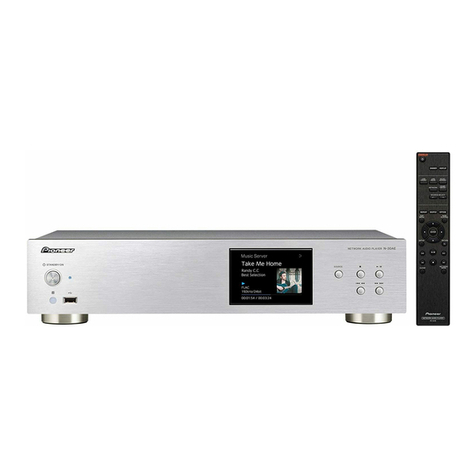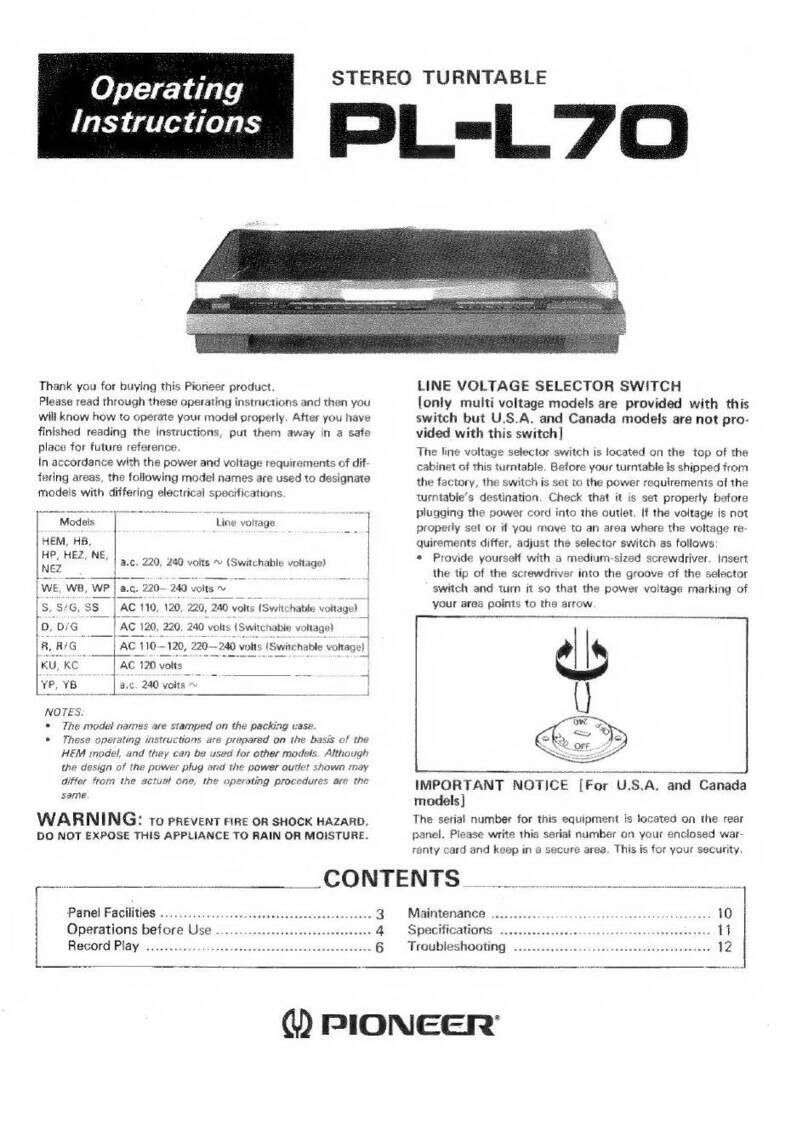Pioneer PL-X505 User manual
Other Pioneer Turntable manuals

Pioneer
Pioneer BDP-170 User manual

Pioneer
Pioneer PL-530 User manual
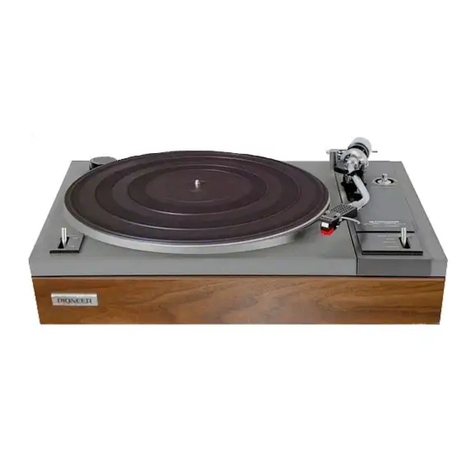
Pioneer
Pioneer PL-112D User manual
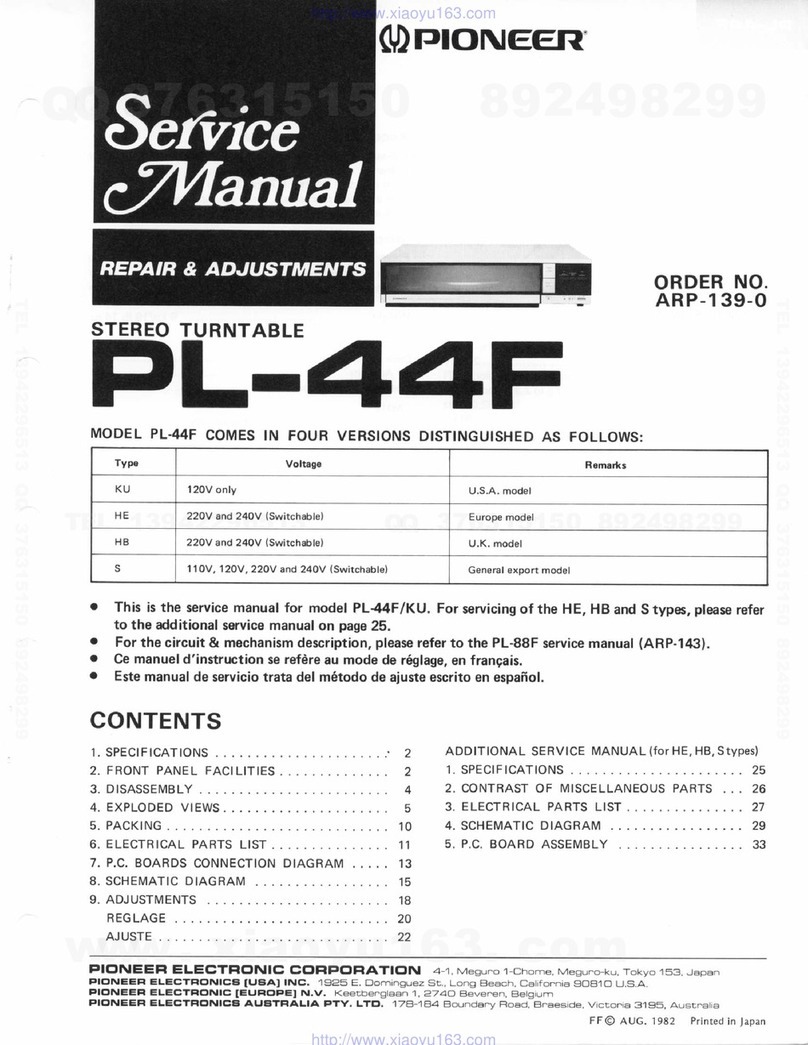
Pioneer
Pioneer PL-44F User manual

Pioneer
Pioneer PL-510A User manual
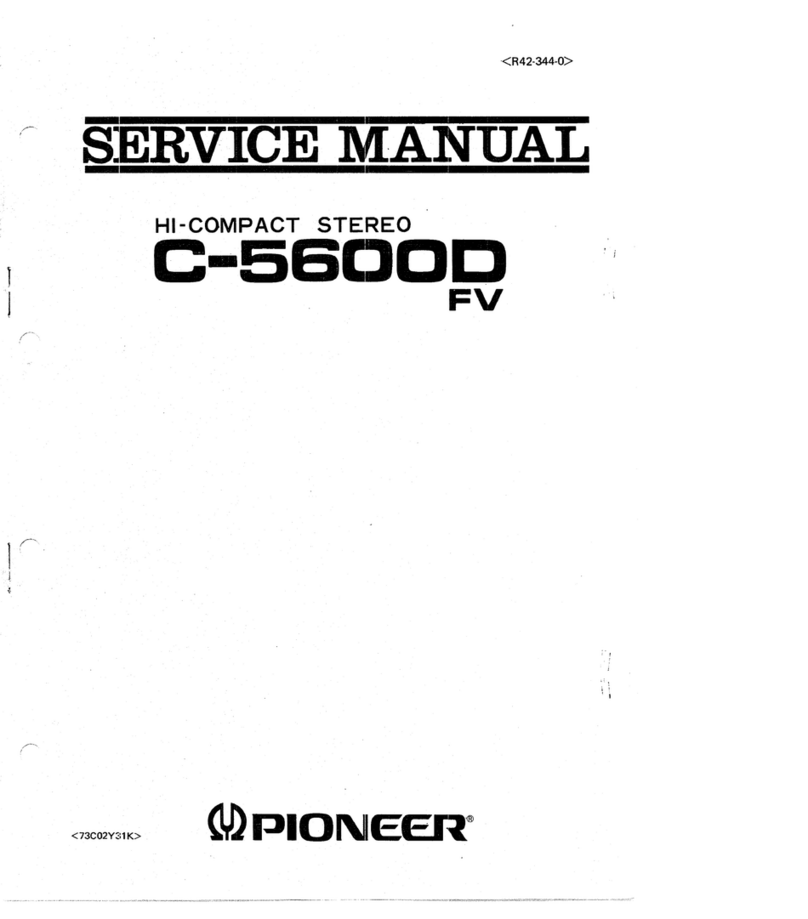
Pioneer
Pioneer C-5600DFV User manual
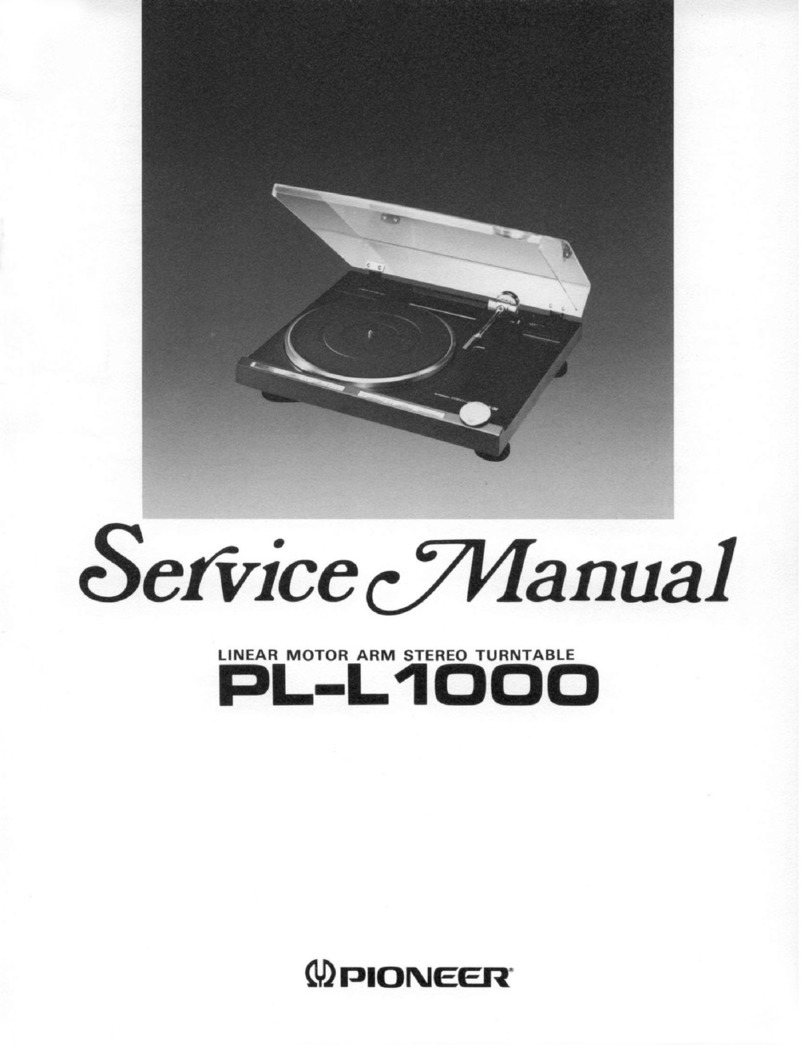
Pioneer
Pioneer PL-L1000 User manual

Pioneer
Pioneer PL-71 User manual

Pioneer
Pioneer PL-530 User manual
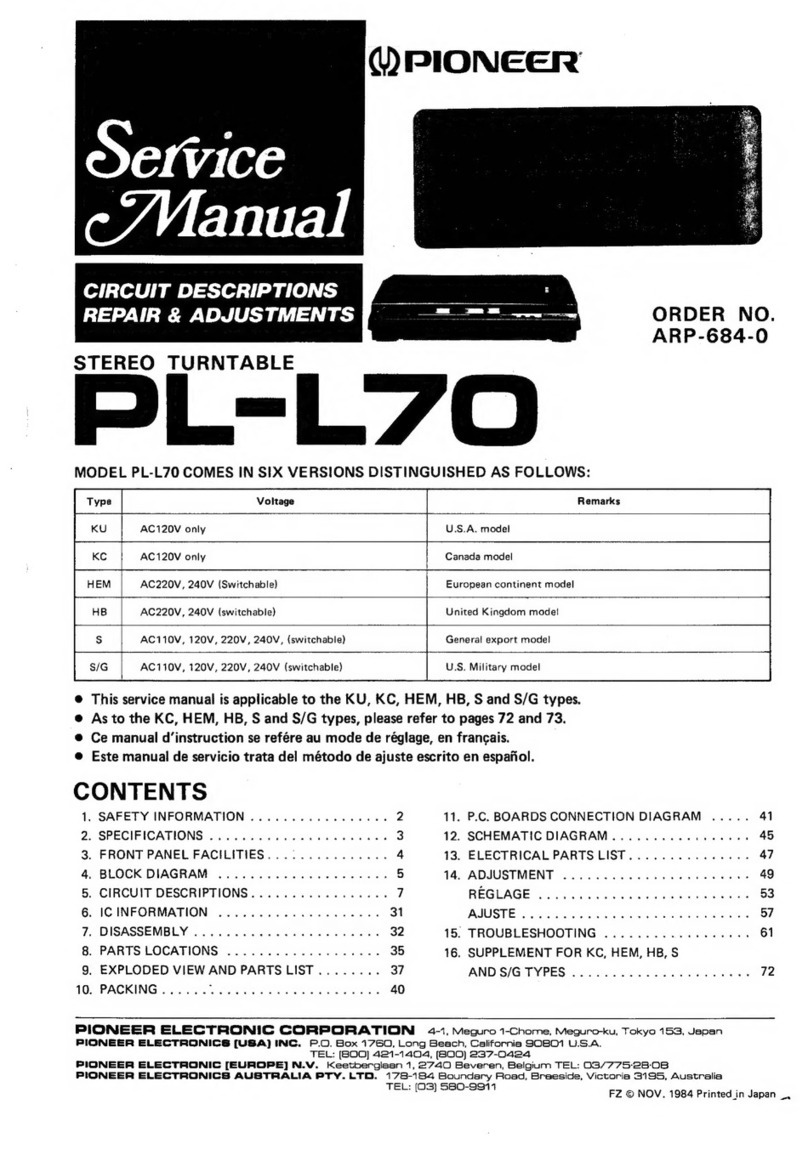
Pioneer
Pioneer PL-L70 User manual

Pioneer
Pioneer PL-570 User manual
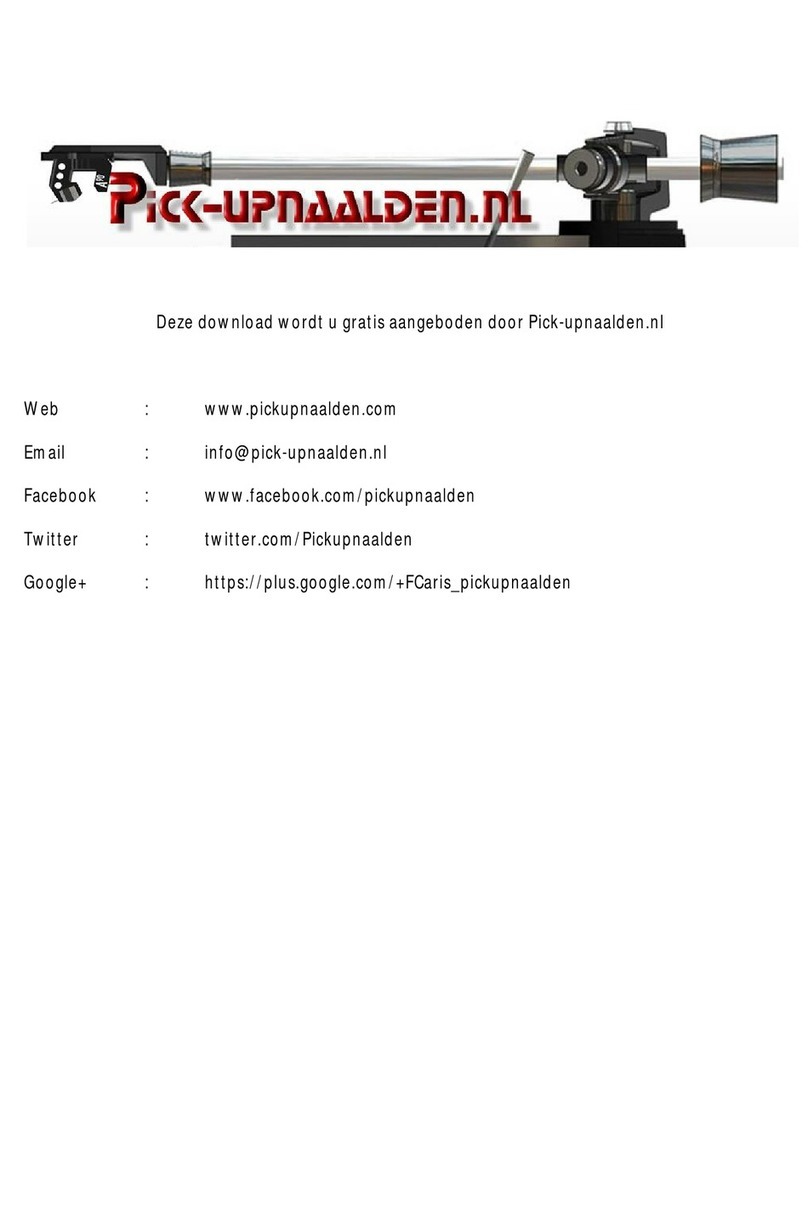
Pioneer
Pioneer PL-110 User manual

Pioneer
Pioneer PL-520 User manual

Pioneer
Pioneer PL-4 User manual
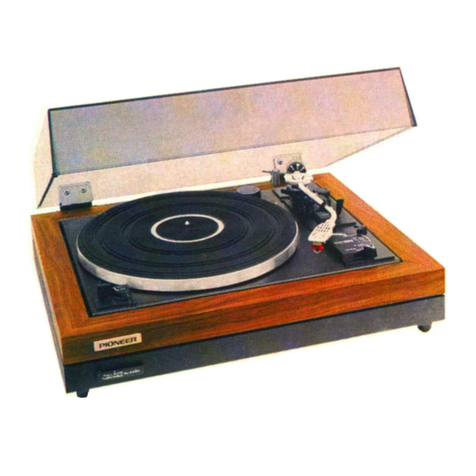
Pioneer
Pioneer PL-A45D User manual
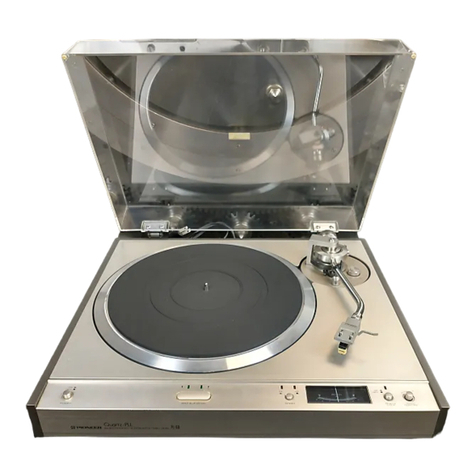
Pioneer
Pioneer PL-610 User manual

Pioneer
Pioneer PL-15D-II User manual

Pioneer
Pioneer PL-30-K User manual

Pioneer
Pioneer PL-260 KU User manual
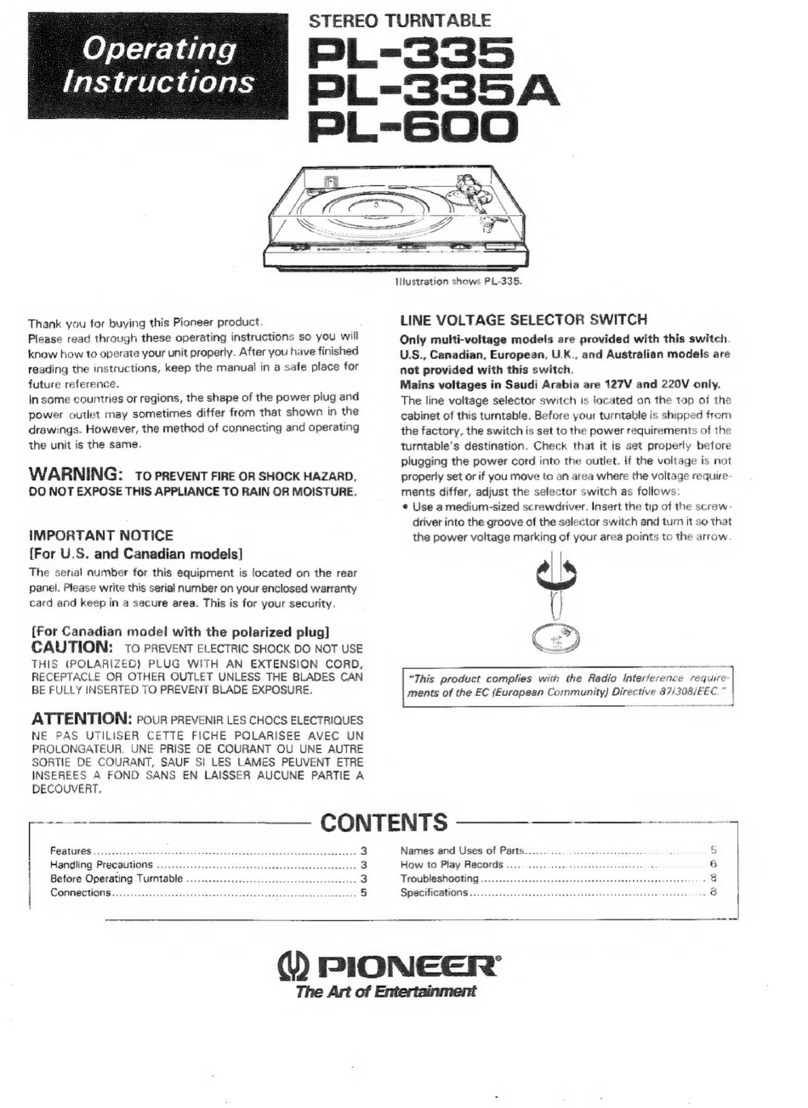
Pioneer
Pioneer PL-600 User manual
